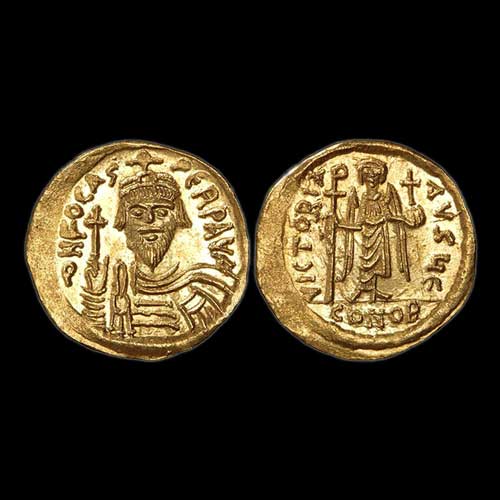The Gold Solidus of Rome
2017-12-01 Fri
Roman golden solidus is comparatively less expensive than other roman gold coins in the numismatic markets. The first gold solidus was minted in early 3rd Century CE under Constantine in the German city of Trier. They were later struck at other mints in the empire as well. Constantine became the only ruler of the empire in 324 CE. Solidus was the standard gold coin of the Roman Empire which was produced at this point in history.The solidus was used instead of aureus. Aurei was produced since the Roman Republic times but its weight and fineness reduced considerably by the third century. 72 solidi formed a Roman pound which weighed 326.6 g or the modern 4.5 grams, a gram less than the former aureus. Solidus succeeded not because the weight was reduced but because the fineness and weight were maintained for more than 700 years. The solidus improved economy in the Byzantine Empire and was accepted worldwide. It became the most important trade coin in Europe, the Mediterranean, parts of Asia and in the Arab world as well, almost equivalent to the modern day dollar or euro. Many empires started duplicating this coin but nothing could be compared to the magnificent solidus.
A 4.40 g Solidus, struck between 602 and 610 CE at Byzantium is priced at 995$. The obverse features a draped & cuirassed bust while the reverse features an angel holding long cross & cross on globe.
A 4.29 g AV Solidus, struck between 402 and 406 CE at Honorius is priced at 870.99$. The coin has a weak strike but is fairly lustrous.
A 4.36 g Solidus, struck at Constantinople, between 519 and 527 CE under the regime of Justin I is priced at 829.51$. The coin features a draped and cuirassed bust, an angel holding jeweled cross and cross on globe; star in right field; mintmark CONOB, D N IVSTI-NVS P P AVG, VICTORI-A AVGGG B.
All these coins can be purchased at MA-Shops.
Latest News
-
Mahatma
2024-04-25 ThuIndia Post issued a commemorative postage stamp on #LalaHansraj, also known as Mahatma Hansraj for�...
-
Berar Mint of Muhammad Akbar
2024-04-25 ThuBerar was a kingdom located in the Deccan region, with Elichpur as its capital. It was one of the Su...
-
Janma Kalnayak of Bhagwan Mahavir
2024-04-24 WedOn 21st April 2024 which was the 2550th Janma Kalnyanak of Bhagwan Mahavir Swami, PM Modi unveile...
-
Gold Pagoda of Vijaynagar Empire King Deva Raya I
2024-04-10 WedKing Deva Raya I of the Vijayanagara Empire was a patron of Kannada literature and architecture. He ...
-
Silver Denarius of Septimus Severus
2024-04-05 FriLucius Septimius Severus served as the Roman emperor from 193 to 211 AD. Severus sat on the throne o...

